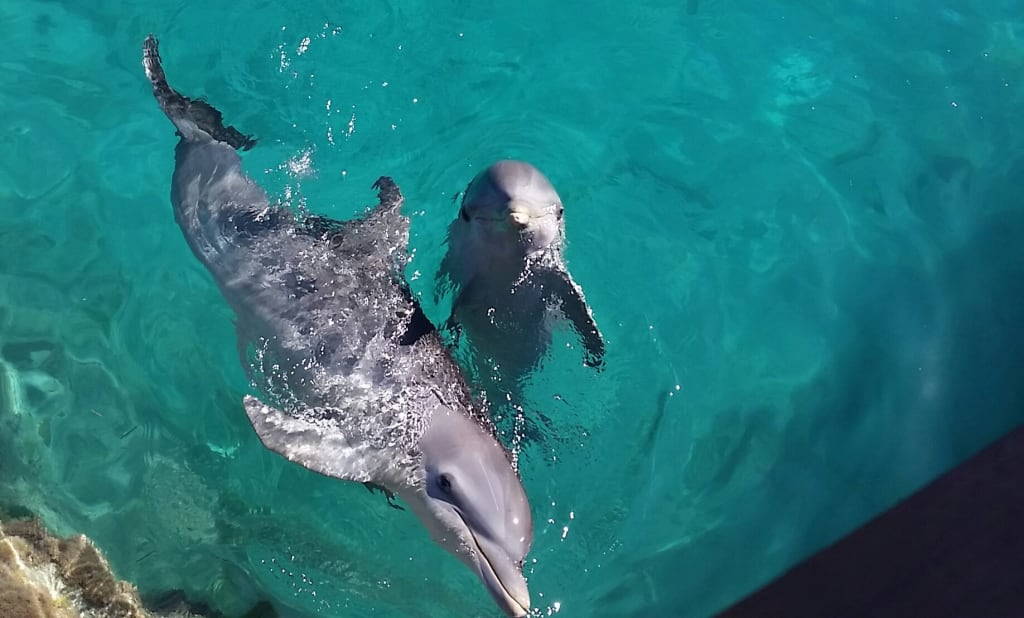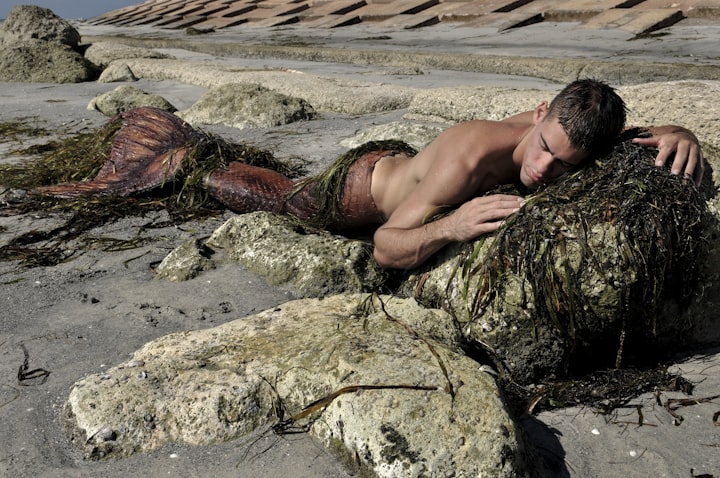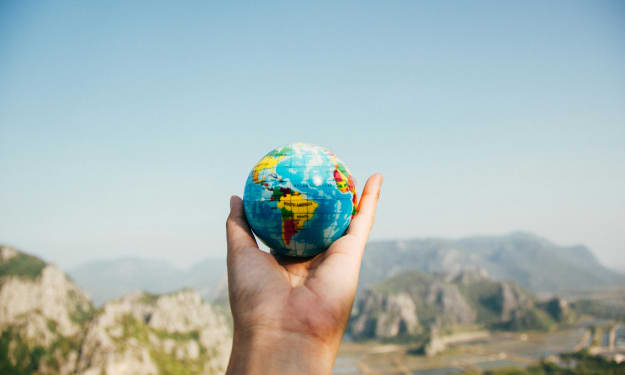Life under the Sea
Preserving our oceans one sea animal at a time.

Wave Makers
Having been blessed to be born and grow up in a beautiful tropical environment has made me aware and more cautious about how to reduce, reuse and recycle items that I use daily. The motto if my country the Bahamas which is reflected in my national flag is the beauty of the sun, sand and sea.
I have always been aware of my environment and learning to go on beach clean-ups and acknowledging our national treasures which include the Bahama Parrot and our precious marine life.
I have been to my Bahamas National trust and Adastra Gardens which are great resources for protecting and preserving our national wildlife. We even have Flamingos which are beautiful and indigous to many islands in the Caribbean.

Subtitle: How to reduce plastic pollution in the ocean
Let’s help keep our marine life from eating and swimming in garbage.
There are millions of tons of debris floating around in that water—and most of it is plastic.
Image alt description: plastic debris floating in the ocean
This constant barrage (the equivalent of 136 billion milk jugs each year, estimates a study published in the journal Science) poses a serious danger to marine life. Animals can get tangled up in this trash or ingest it—either because they mistake it as prey or because the plastic has been broken down into tiny particles by seawater.
Plastic is uniquely problematic because it’s non-biodegradable and therefore sticks around for a lot longer (like up to 1,000 years longer) than other forms of trash. Around 80 percent of marine litter actually originates on land—either swept in from the coastline or carried to rivers from the streets during heavy rain via storm drains and sewer overflows.
Image alt description: plastic bag over turtle’s face
So the best thing we can do to protect our waterways is to try to keep as much plastic as possible out of the waste stream in the first place. The good news? There are many small ways you can have a big impact.
1. Wean yourself off disposable plastics.
Ninety percent of the plastic items in our daily lives are used once and then chucked: grocery bags, disposable cutlery, straws. Replace them with reusable versions. It only takes a few times of bringing your own bags to the store to reduce the waste.
2. Stop buying water.
Each year, close to 20 billion plastic bottles are tossed in the trash. Carry a reusable bottle in your bag to use while shopping.
3. Boycott microbeads.
Those little plastic scrubbers found in beauty products—facial scrubs, toothpaste, body washes—might look harmless, but their tiny size allows them to slip through water-treatment plants. Unfortunately, they also look just like food to some marine animals. Opt for products with natural exfoliants, like oatmeal or salt, instead.
4. Cook more.
Not only is it healthier, but making your own meals doesn’t involve takeout containers. For those times when you do order in or eat out, tell the establishment you don’t need any plastic cutlery.
5. Purchase items secondhand.
New toys and electronic gadgets, especially, come with all kinds of plastic packaging. Search the shelves of thrift stores, neighborhood garage sales, or online postings for items that are just as good when previously used. You’ll save yourself a few bucks, too.
6. Recycle
It seems obvious, but we’re not doing a great job of it. For example, less than 14 percent of plastic packaging is recycled. Confused about what can and can’t go in the bin?. Most beverage and liquid cleaner bottles will be #1 (PET), which is commonly accepted by most curbside recycling companies. Containers marked #2 (HDPE; typically slightly heavier-duty bottles for milk, juice, and laundry detergent) and #5 (PP; plastic cutlery, yogurt, and margarine tubs, ketchup bottles) are also recyclable in some areas.
Image alt description: recycling bins
7. Support a bag tax or ban.
Urge your elected officials to introduce or support legislation that would make plastic-bag use less desirable.
8. Buy in bulk.
Select the bigger container instead of buying several smaller ones. This will help to reduce waste accumulation.
9. Bring your own garment bag to the dry cleaner.
Invest in a zippered fabric bag and request that your cleaned items be returned in it instead of sheathed in plastic.
10. Put pressure on manufacturers.
Though we can make a difference through our own habits, corporations obviously have a much bigger footprint. Write a letter, send a tweet, or hit them where it really hurts: Give your money to a more sustainable competitor.
Remember the best way to help save the environment is to reduce, reuse and recycle what and when you can!
It will not one be beneficial to you but also to future generations.
Call to Action: Sign up to reduce waste.
10 Ways You Can Help Save the Ocean
Helpful ways to save marine life in the ocean
Image alt description: Marine life in the ocean
Oceans cover 71 percent of the planet and are home to important species and ecosystems that we rely on for food, livelihoods, climate regulation, and more. The oceans need our help.
Here is how we can help protect and restore our oceans for future generations.
1. Demand plastic-free alternatives
An estimated 17.6 billion pounds of plastic leaks into the marine environment every year.
We must urge companies to provide consumers with plastic-free alternatives and say no to single-use plastics such as straws, plastic cutlery, water bottles, and plastic bags.
2. Reduce your carbon footprint
Image alt description: carbon footprint
Carbon dioxide, a known greenhouse gas, is making our oceans more acidic. This is contributing to the loss of corals on a global scale as the increasing acidity of the water weakens their calcium skeletons. You can reduce your carbon footprint by adopting some of these simple measures:
• Turn off the lights when you leave a room.
• Put on a sweater in the winter instead of turning up your thermostat.
3. Avoid ocean-harming products
There are many products directly linked to harming endangered or threatened species, unsustainable fishing methods, and pollution. Using single-use plastics like straws and water bottles can end up in our oceans. These products support unsustainable fishing and threaten essential species and ecosystems. Avoiding their use would help our ecosystem.
4. Eat sustainable seafood
Choose seafood that is healthy for you and the oceans from well-managed, wild fisheries. We know it’s hard to know what fish are okay to eat, which is why you can turn to these helpful resources:
• Print or download a guide from Seafood Watch to help you make sustainable choices when you buy or order seafood.
• Consider adding small, oily fish that are packed with protein to your diet.
5. Vote on ocean issues
Electing public officials that support good ocean policies can help us protect marine life and our oceans. Do your research on candidates, make an informed decision, and then exercise your right (and responsibility) to vote. Follow up with your candidates and elected officials regularly to remind them of policies you care about.
6. Contact your representatives and lawmakers
Your representatives and lawmakers might not know how important these issues are that face our oceans. But they will if you tell them. It’s up to constituents like you to make lawmakers aware of the crisis facing marine life and our oceans. Don’t be shy! Take action to contact your government representatives and lawmakers directly.
7. Explore the oceans
“People protect what they love.” – Jacques-Yves Cousteau
Get outside and explore the oceans around you! If you don’t live near the ocean, visit your local lake or river to learn how your watershed connects to the ocean. There are plenty of online opportunities to explore the oceans, too. Read fun and interesting facts about all kinds of animals, from sharks and seals to octopuses and clownfish.
Image alt description: swimmer in the ocean
8. Leave nothing behind
As beach crowds increase, so does the amount of trash left behind or blown away. Don’t let your day outside contribute to the destruction of our oceans. Remember to collect and dispose of your trash.
9. Share your ocean heroics with friends, family, and coworkers
Tell people what’s going on with the world’s oceans and what they can do to join you in making a difference. Share fun facts and join the conversation with us on social media.
10. Join Oceana
More than 800,000 members and activists in over 200 countries have already joined Oceana – the largest international organization focused solely on ocean conservation. Become an Oceana wavemaker and continue your efforts to help save the oceans. As a Wavemaker, you’ll receive a monthly update on the latest ocean news and learn ways you can help protect marine life. Join Oceana today to donate to protect our oceans.
Image alt description: protect our oceans marine life
After reviewing this vital information I hope that my arguments on why and how we can conserve our oceans and marine life has been evident and when you purchase plastic bottles or a soda you will be more aware of what is happening to our oceans and marine life and do our part to persevere ethem for future generations.





Comments
There are no comments for this story
Be the first to respond and start the conversation.